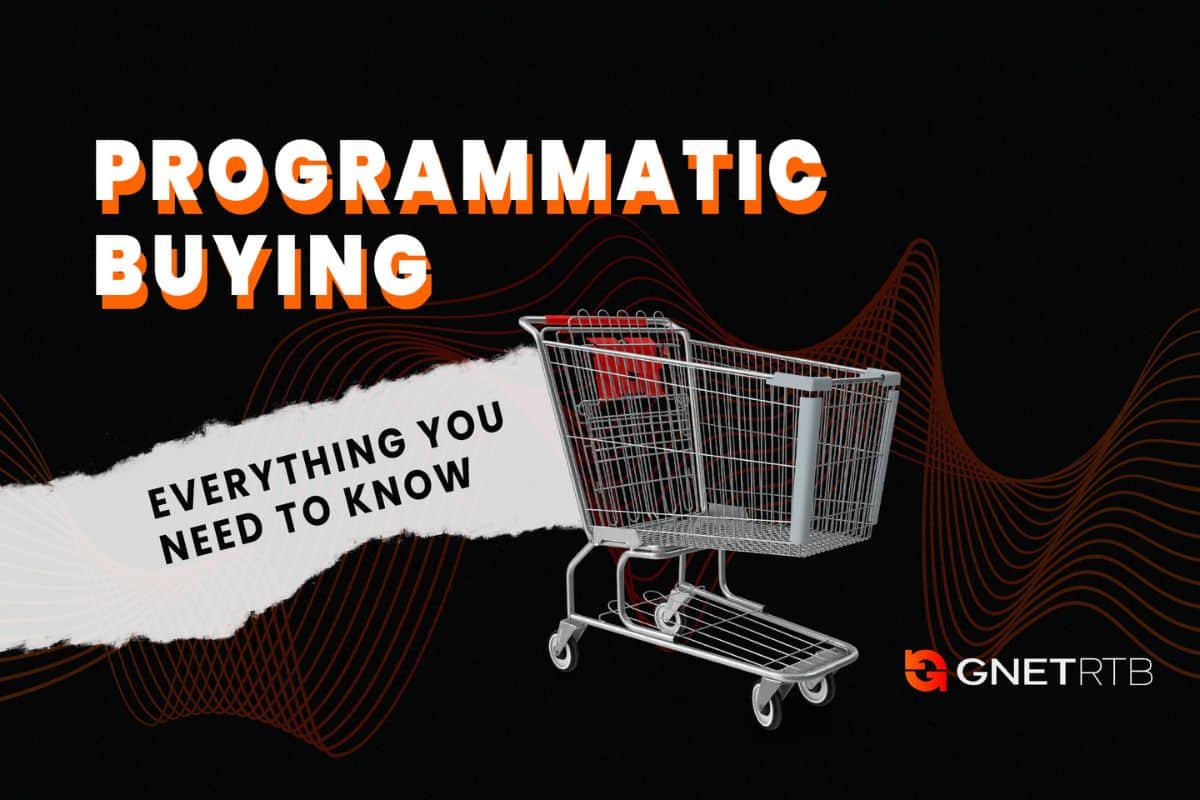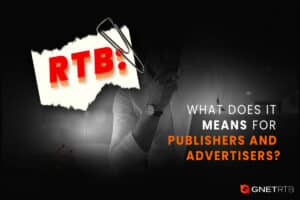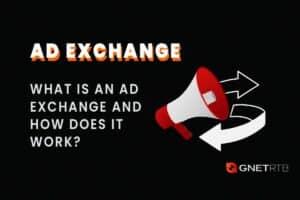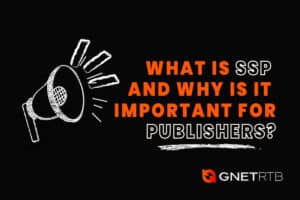Every year that passes by programmatic buying gains more popularity for allowing the automation of media buying, especially the purchase of advertising space. However, many marketers still do not know exactly what it is.
That’s why we’ve prepared this article, which will help you understand the programmatic buying processes that have driven the AdTech industry.
What is Media Buying?
Media buying can be defined as the act of buying advertising from a media company. The objective is to identify and buy, at the lowest possible cost, advertising space on channels that are relevant to the target public, since that way advertising pieces will be displayed at the ideal time.
Media buying is a relevant process both for traditional marketing and digital channels, which involves negotiating the price and placement of ads, as well as finding the best ad spaces.
Before delving into programmatic buying, let’s briefly address some media buying processes.
Manual Media Buying
Until 1996, when ad servers first came out, media buying was completely manual. This process often took hours or days to be completed. Publishers and advertisers worked together, tagging was manual, and there was no way to define targets or even produce reports.
How Does the Manual Media Buying Transaction Work?
In the manual media buying transaction, the advertiser and publisher sign an insertion order (IO). The IO is an agreement that defines the terms and conditions of the campaign, such as the dates, locations and amount of ad serving.
After that, the advertiser sends their ad tags (HTML code) to the publisher, which adds them to the website to start the campaign.
Manual Media Buying Evolution
After ad servers were implemented, manual buying fell out of favor and was replaced by programmatic buying. Since then, processes have been constantly evolving, becoming increasingly smart, fast and dynamic.
In media buying processes, programmatic refers to the use of technology, algorithms and data to buy and sell media online in an automated way.

What is Programmatic Buying?
Programmatic buying describes the process of aggregating, booking, serving, analyzing and optimizing display advertising through software interfaces and algorithms used by advertisers and media buyers.
These software also provide data related to the target public and useful information for segmentation strategies. This data can also relate to a particular inventory. That being said, advertisers can not only choose inventory sources, but also specify and choose their target public, which can result in greater actionability.
Programmatic buying processes include methods such as programmatic direct, real-time bidding (RTB), waterfall, header bidding, and private marketplace (PMP). All transactions use and aggregate data from multiple sources to inform campaign targeting and optimization decisions.
Programmatic buying is often compared to real-time bidding (RTB), but RTB is only a small part of the process.
What is Real-time Bidding (RTB)?
Released in the late 2000s, RTB is a protocol originally designed to help publishers sell remaining inventory to the advertisers. Nowadays, RTB is used to sell all types of inventories, including the premium ones.
RTB allows advertisers to buy individual impressions from multiple publishers. In this manner, you can accurately select audiences and bid based on known information about the website and the users. Additionally, publishers benefit from receiving higher CPMs.
The process takes less than a second. Transactions take place through an SSP or an ad exchange. Buyers include ad exchanges, ATDs, ad networks and DSPs, giving the publisher greater control over ad inventory and optimizing the yield.
When a user visits a website or an app, an RTB occurs, and advertisers bid on the ad space provided by the publisher. The advertiser who bids the highest for the space prints the advertising on the publisher’s website or app.
To learn more about it we suggest you access the article named RTB: What does it mean for publishers and advertisers?
How Does Programmatic Buying Work?
The programmatic buying process takes place within platforms called “Ad Exchanges”. It is on this platform that publishers and app developers make their advertising inventory available.
Publishers’ programmatic platforms are called Supply-Side-Platforms (SSP), which show available ads, location and price to another platform called Demand-Side-Platforms (DSP). DSPs then drive real-time ad buying and optimization.
In programmatic buying, advertisers, publishers and app developers accept the terms of the platforms they use. After that, the process is similar to the manual media buying, but by adding the ad server into the process, it is possible to target campaigns, determine ad placement, generate reports and eliminate repetitive manual tasks.
In addition to these advantages, the differential is being able to modify the campaign when it is running. If your segmentation and positioning results aren’t turning out as planned, you can quickly make changes.
Available Programmatic Buying Formats
Programmatic buying platforms display different advertising formats, such as banners and videos, subdivided into different types of ads, such as native ads, interstitial ads, offerwall ads, app open ads, rewarded ads, etc.
All of these ad formats and types aim to reinforce brand building through campaigns based on the concepts of awareness, consideration and decision at each stage of the buyer’s journey.
Programmatic Buying Benefits
The biggest advantage of programmatic buying is its effective implementation as part of an advertising strategy. The target public is easily identified and engaged, significantly reducing outreach loss.
Programmatic buying makes it possible to reach more people than individuals directly affected by an advertising environment (for example, the target audience of “car buyers” for a website whose theme is “motorsport”). Programmatic buying makes it possible to reach people who visit other thematically matched websites.
Once the segmentation is specified, it is possible to gradually identify the interests shown by a user in the past. Through programmatic buying, there is greater range to establish connection with the public and, consequently, obtain a better performance.
Programmatic Buying Advantages
Programmatic buying has automated and revolutionized media trading, but this would not have happened if automated media did not offer major advantages (listed below):
Practicality
As already mentioned, buying and selling media has become faster and easier, offering more access to publishers with smaller websites. Due to its technology and speed, it also saves you time, precisely because it is an automatic partnership, without the need for direct contact.
Price
The advertiser decides how much he wants to pay for a given impression and the campaign will be carried out without exceeding the total amount that was determined.
Exact audience
Ads reach the public defined by the campaign advertiser, so that the banner does not appear on a random page that does not match the purpose of the brand. This is obtained through criteria such as gender, age, social class, location, user profile, and others.
Keep track of result
With the programmatic purchase it is possible to follow, analyze and measure in detail how the users are experiencing the campaign, all in real time, allowing the advertiser to change project details according to its repercussions.
Greater visibility
Once the public is segmented, the ad will be delivered to users interested in the topic, providing greater engagement between reader and banner.
Programmatic Buying Categories
There are different purchase categories for programmatic campaigns. Find out now what they are:
Open Bidding
Open exchange is the most used method for programmatic campaigns, where it is possible to display advertising on different websites and apps through auctions. The advertiser defines his target audience, by setting up in advance, information such as geographic location, interests, gender, age, etc, in order to determine the kind of space you want to buy. The advantage of open exchange is that it can be present on many websites and applications and many advertisers can bid.
Private MarketPlace (PMP)
On the other hand, the Private MarketPlace (PMP) can only be accessed if the buyer has been invited by the supplier through a transaction ID. The buyer will be able to buy the ad space through RTB. This system allows large publishers to sell inventory to specific buyers.
This market generally delivers more qualified impressions, is more transparent, and has less competition. Although a price floor may be applied, prints are priced much higher than on the open market.
Programmatic Direct
Also known as premium programmatic, in this method of ads purchase and sells, transactions are arranged between sellers and buyers, and what matters is the connection between them. In this model, transactions can be brokered through private marketplace (PMP), preferred deal or programmatic guaranteed (PG). The agreement usually includes a fixed number of impressions, a delivery schedule, and a predefined price.
Programmatic Guaranteed
About programmatic guaranteed, the advertiser buys ad inventory directly from the publisher. In this model, he buys a fixed number of impressions and the publisher must deliver the exact amount for a guaranteed price.
Preferred Deal
Preferred deals are transactions in which the publisher agrees to provide exclusive preferential access to a specific inventory in exchange for a predetermined CPM fee. Terms are negotiated through an SSP, the price is fixed, and the print order does not participate in the auction. It is also known as non-guaranteed programmatic since the advertiser can choose whether or not to buy the impressions. If the advertiser decides not to buy ad inventory, the space is directed to an open or private auction.
What is the Difference between Programmatic Direct and the other Transaction Categories?

Programmatic direct is positioned between the traditional reservation and the open auction system. It is a type of transaction where the publisher or app developer bypasses the auctions and sells the ad inventory at a fixed cost per thousand (CPM) to one or many advertisers.
About RTB, publishers and app developers make their inventory available to all buyers and the highest bidder wins the right to display the ad. Direct agreements involve more security and transparency, but they need to be negotiated, which means more human involvement than any other programmatic agreement.
Auction management methods
There are two methods of managing programmatic advertising auctions. Check out below which ones are they:
What is Waterfall?
Waterfall, also known as waterfall tags, is used by publishers to sell remaining inventory. The process happens when a publisher is unable to sell the premium inventory, previously reserved for direct selling.
In this process, demand sources are started one at a time, ranked from highest to lowest according to its historical average throughput configured by the publisher.
However, this buy and sell system does not consider the highest bid at the specific time of sale, which can lead to the publisher losing the highest bid for the impression.
What is Header Bidding?
Header bidding, also called pre-bidding or advance bidding, allows publishers to simultaneously collect bids from multiple demand sources even before the ad server loads other tags.
In this process, a JavaScript code is inserted into the header section of a website or app to collect bids. Header bidding arose due to waterfall inefficiencies, since most publishers use Google’s ad server, which prefers its own ad products.
As a result, other Ad Tech platforms missed the opportunity to buy ad space, even if they were willing to pay more for it.
Conclusion
In a brief note, programmatic buying has the significant advantage of being efficient. The target public is easily identified and reached, which allows to reduce losses, a broader reach and a much better performance.
In addition, it is possible to follow the results in real time, which allows advertisers, publishers and apps developers to optimize their advertising strategy more easily and quickly.
Programmatic buying is increasingly used in advertising strategies, especially on mobile. If you want to try programmatic buying and prove its efficiency, GnetRTB might be the best place for you! Access this link and be assisted by our specialist team.




